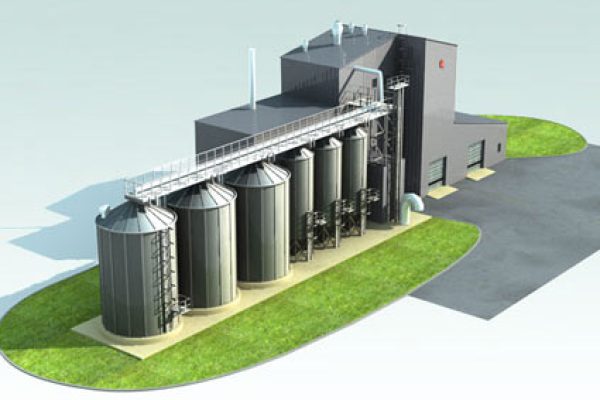Project Report For Ethanol plant
Introduction
Project Report For Ethanol Plant is as Follows.
An ethanol plant, also known as a bioethanol plant or a fuel ethanol production facility, is an industrial facility that generates ethanol from plant-based feedstocks through fermentation and distillation. Ethanol, commonly known as ethyl alcohol or grain alcohol, is a renewable and extensively used biofuel that may be combined with petrol or used in some cars as an independent fuel.
The fundamental function of an ethanol plant is to transform biomass, such as maize, sugarcane, wheat, or other crops, into ethanol. The process begins with the supply and storage of the feedstock, which is subsequently milled or ground into a fine powder. This powdered biomass is combined with water to form a slurry, then enzymes are added to break down the complex polysaccharides into simpler sugars.
The sugar-rich slurry is then moved to fermentation tanks, where yeast is added. During the fermentation process, the yeast consumes the sugars and generates ethanol as a byproduct. The fermentation process normally takes a few days, during which time the combination is carefully monitored for ideal conditions. When fermentation is complete, the resultant liquid, known as beer, includes ethanol as well as other components such as water, unfermented carbohydrates, and particulates. The beer is next subjected to a distillation process, in which heat is used to separate the ethanol from the other ingredients. This method uses the differing boiling temperatures of the components to separate and collect the ethanol.
During distillation, the ethanol is dried to eliminate any leftover water, producing anhydrous ethanol, which is more suited for use as a fuel. Depending on the intended purpose, the ethanol may go through further purifying and denaturing operations. The size and capacity of ethanol plants varies, ranging from small-scale facilities to enormous industrial complexes. They are often placed in areas with sufficient feedstock sources and close access to transportation infrastructure to allow for effective distribution.
Ethanol production at these facilities adds to the renewable energy sector, lowers dependency on fossil fuels, and aids in the reduction of greenhouse gas emissions. Ethanol is frequently combined with petrol to produce ethanol-gasoline mixes like E10 (10% ethanol, 90% petrol) or E85 (85% ethanol, 15% petrol), which are utilised as transportation fuels in many countries.

Market Potential Of Ethanol Plant
The global ethanol market was worth USD 93.7 billion in 2020 and is anticipated to be worth USD 155.6 billion by 2030, growing at a 5.2% CAGR from 2021 to 2030.
The worldwide ethanol market is predicted to rise due to its application in a variety of sectors. Because of its flammability features and clean burning as a fuel, demand from the fuel and additive industry dominates the Ethanol market.
The demand for Ethanol as a solvent in the production of a wide range of chemicals is expected to increase during the forecast period. The demand for ethanol will rise even higher in the coming years as people become more health-conscious and there is a greater demand for disinfectants. By 2035, ethanol consumption is estimated to reach over 162 million tonnes.
The rising usage of the commodity as a biofuel is driving up demand for the product. Increased alcoholic beverage consumption is another important factor driving industry development. Natural and petrochemical feedstocks can both be used to manufacture ethanol.
During the natural process, natural sugars are fermented in the presence of yeast. As a result of increased shale gas supply, ethylene production is increasing. The market is expected to overstock with ethylene as oil output drops and new ethylene capacity comes online, resulting in ethanol production standstill.
The ethanol market is divided into three categories: source, purity, and application. According to the source, the market is divided into three categories: Sugar & Molasses Based, Grain Based, and Second Generation. The market is divided into two types according on purity: denatured and indentured. The market is divided into five applications: Industrial Solvents, Fuel & Fuel Additives, Beverages, Disinfectant, Personal Care, and Others.
